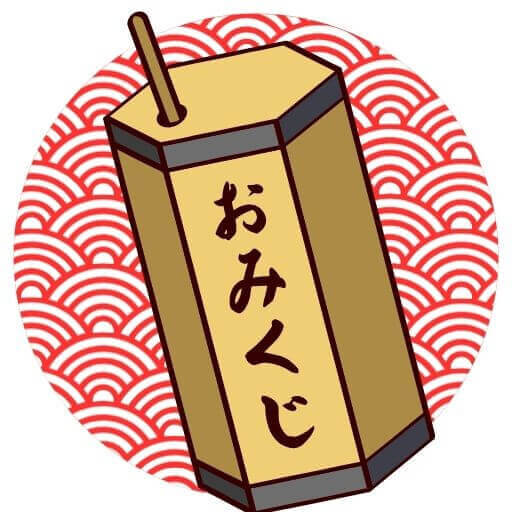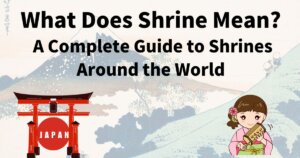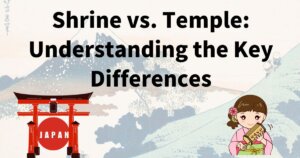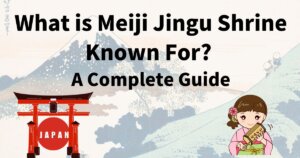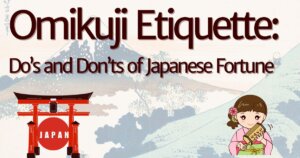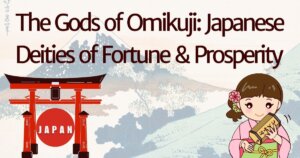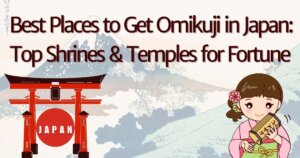📍 What is the deeper meaning of Omikuji?
Explore the spiritual lessons behind Japanese fortune slips.
Learn how Omikuji connects to Shinto and Buddhist beliefs.
Find out how to use Omikuji for self-reflection and personal growth.
The Spiritual Significance of Omikuji in Japanese Culture
(おみくじの精神的な重要性と日本文化への影響)
Omikuji are more than just fortune slips; they reflect deep-rooted spiritual and philosophical aspects of Japanese culture. Unlike Western fortune-telling, which often predicts the future, Omikuji serve as a guide for self-reflection and personal growth.
The Connection Between Omikuji and Shinto Beliefs
Shintoism, Japan’s indigenous religion, emphasizes harmony with nature and divine guidance. Omikuji at Shinto shrines are seen as messages from the gods (kami), offering wisdom and advice.
How Omikuji Relate to Buddhist Philosophy
Buddhism teaches impermanence (無常) and karma (因果). Many Omikuji reflect these concepts, reminding people that luck and misfortune are temporary and influenced by one’s actions.
Omikuji as a Tool for Self-Reflection
Rather than seeing Omikuji as predictions, many people interpret them as guidance for self-improvement. Encourages mindfulness and self-awareness
- Provides motivation for positive change
- Helps people focus on gratitude and appreciation
The Symbolism of Omikuji’s Fortune Levels
Omikuji typically have different fortune levels, ranging from great blessing (大吉) to great misfortune (大凶). Each level represents a different lesson rather than a fixed fate. with Omikuji
The Rituals and Traditions Associated with Omikuji
Why Do People Tie Omikuji to Trees or Racks?
Many visitors tie their Omikuji to special racks or trees at shrines and temples. This act symbolizes leaving one’s fate to the gods and hoping for future blessings.
How to Properly Dispose of an Old Omikuji
Old Omikuji should be returned to a shrine or temple for ceremonial burning. This act is similar to returning an Omamori (お守り) and signifies gratitude for past guidance.
Special Omikuji for Festivals and Celebrations
During major Japanese festivals, some shrines and temples offer limited-time Omikuji with unique blessings.
The Connection Between Omikuji and New Year Traditions
Many Japanese people draw Omikuji at the start of the new year to gain insight into what the upcoming year holds for them.
Omikuji and Personal Growth: How to Apply Its Teachings
Rather than merely accepting the fortune written on Omikuji, applying its advice to one’s daily life can lead to positive change.
Key Takeaways: How Omikuji Reflects Japanese Wisdom
- Omikuji are more than just fortune slips; they provide spiritual guidance.
- They are deeply connected to Shinto and Buddhist teachings.
- Omikuji encourage self-reflection and mindfulness.
- Fortune levels symbolize lessons rather than fixed destinies.
- Tying Omikuji at shrines symbolizes entrusting fate to the gods.
- Omikuji should be returned to a shrine for proper disposal.
- Special Omikuji are available during festivals.
- New Year Omikuji is a major Japanese tradition.
- Omikuji can provide motivation for self-improvement.
- Applying Omikuji’s teachings leads to positive personal growth.
- They serve as a bridge between spiritual traditions and daily life.
- Understanding Omikuji’s meaning enhances one’s appreciation of Japanese culture.
